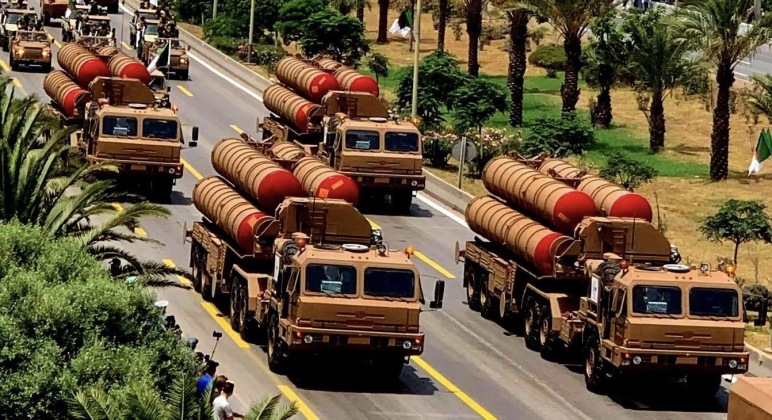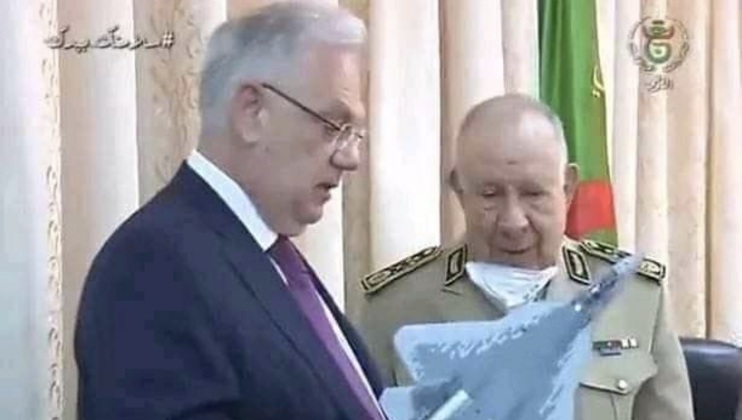The Algerian Air Force has deployed air defense systems for live fire exercises, with multiple batteries of what appear to be S-300PMU-2 systems active, at least one of which fired a long-range missile. The exercise comes amid an increasingly uncertain international security situation and as the country has reinvested in military modernization, with a particular focus on air combat capabilities. The S-300PMU-2 is the most advanced version of the S-300 developed for the Russian Air Force, and Algeria is the second customer for the system after China, with an order placed in 2006 and delivery between 2008 and 2011. The country is the third-largest operator of the system, after China and Russia, and purchased the S-300 missile and hundreds of 48N6, the most powerful long-range surface-to-air missile available at the time – the 48N6 comes in several variants. The S-300PMU-2 currently forms the backbone of the Algerian air defense network, complemented by a wide range of short-range assets such as the Pantsir-SM and BuK-M2. The advanced armor variant was reportedly delivered to the Algerian Air Force, the country’s second-largest complete armaments customer after India, which has been prioritizing the delivery of high-end assets before being acquired by the Russian military itself.

Although the Algerian Air Force is considered by far the most capable in Africa, with the backbone of its fighter capability consisting of a massive fleet of over 70 Su-30MKA heavy fighters, it would be far outnumbered in the event of war Cooperation with NATO makes investment in asymmetric ground-based air defense assets particularly important. The modernization of its defenses accelerated in the early 2010s after its neighbor, Libya, was plunged into chaos for more than a decade after unprovoked intensive airstrikes by the West led to the execution of its leaders. Of the four major Arab republics that forged close ties with the Soviet Union during the Cold War, Algeria remains the only one at peace with Iraq, Libya and Syria, all of which suffered considerable damage following massive Western attacks in the 2000s and 2010s. unstable.
Beginning in June 2021, the U.S.-led mega-military exercise in North Africa simulates on an unprecedented scale combat against an adversary geographically matched to Algeria’s location, with air defenses remarkably similar to those deployed by Algeria, including Russian-made S-400 missile system. Algeria has long been reported to have deployed the S-400, and it is widely suspected that it received it in the 2010s, although the country has been one of the continent’s most secretive when it comes to weapons procurement, meaning they are often confirmed Only after service saw on the ground. In fact, this was the case during recent exercises, where China’s ELINC CHL-906 electronic warfare system made its debut in the country, confirming its sale. However, the identical-looking launch vehicle used by the S-300PMU-2 and its immediate successor, the S-400, made visual confirmation of delivery extremely difficult.

Algeria reportedly signed a major arms deal with Russia in 2021 for $7 billion worth of new equipment — an amount that followed the $7.5 billion signed in 2006 for new weapons including the S-300. It is almost unprecedented for assets to trade post-trade. The new air combat asset is expected to be the centerpiece of a weapons package in response to the proliferation of fifth-generation fighter jets in NATO countries and the development by the United States of sixth-generation fighter jets expected to enter service around 2030. There have been widespread reports and multiple indications that Russia Su-57 fifth-generation fighters will be part of the weapons package and will be delivered in the second half of the century, when they will integrate the new Saturn 30 engines to greatly improve flight performance. By then, the Russian production line is expected to transition to production A significantly enhanced Su-57M variant that has enough endurance to strike targets in most of Europe, and can even conduct air defense missions from bases in southern Algeria. The Su-57 has recently undergone extensive combat testing during the Russo-Ukrainian War, including air-to-air and anti-air suppression roles, and is the only fifth-generation fighter to have been used in such operations. Procurement of more S-400 and the latest S-500 air defense systems, designed to provide strategic defense against high-end targets such as satellites and stealth bombers, is also presumed to be part of the package. The Algerian state has reportedly seen a significant increase in revenue since the signing of the 2021 agreement due to sharp and sustained increases in fossil fuel prices in early 2022, although how this may further affect investment in the modernization of air combat capabilities remains uncertain.

